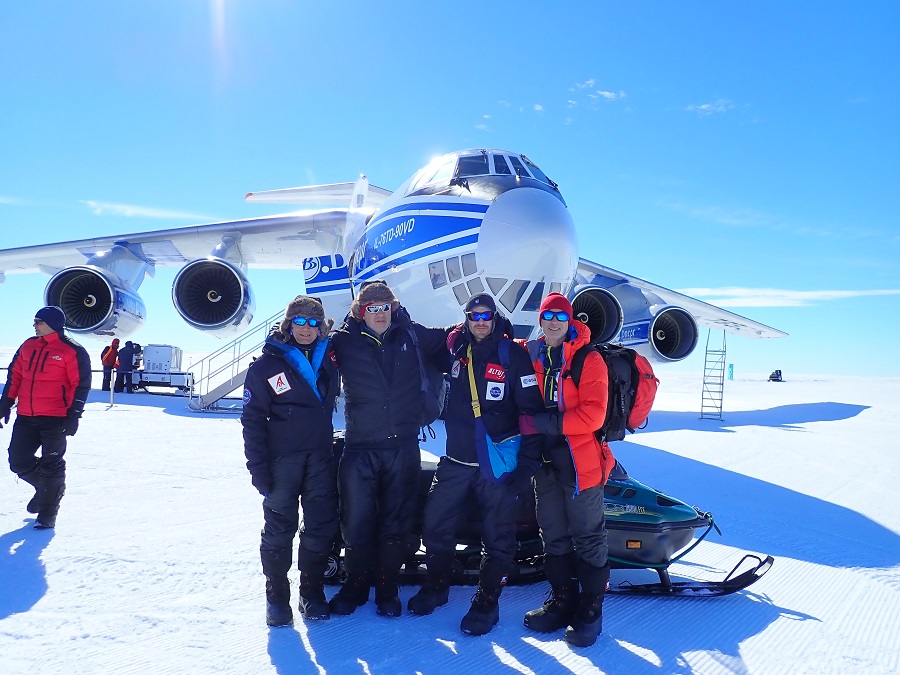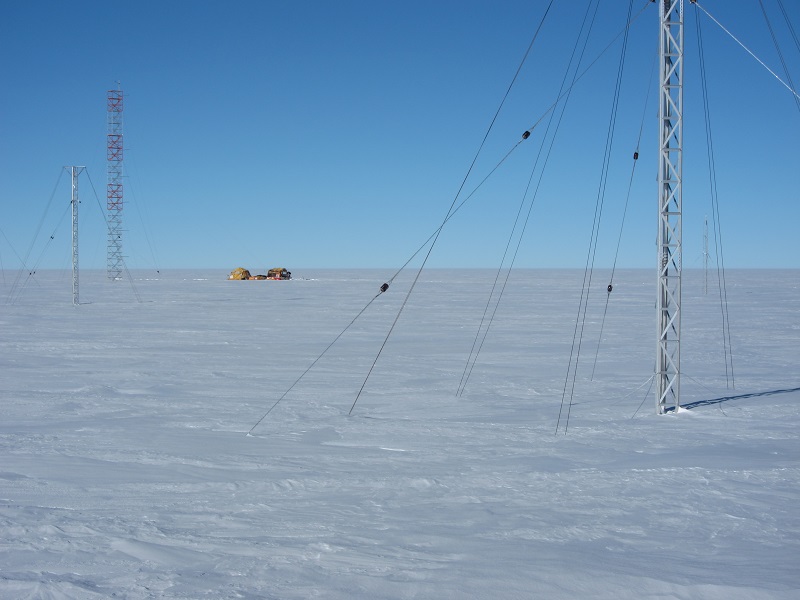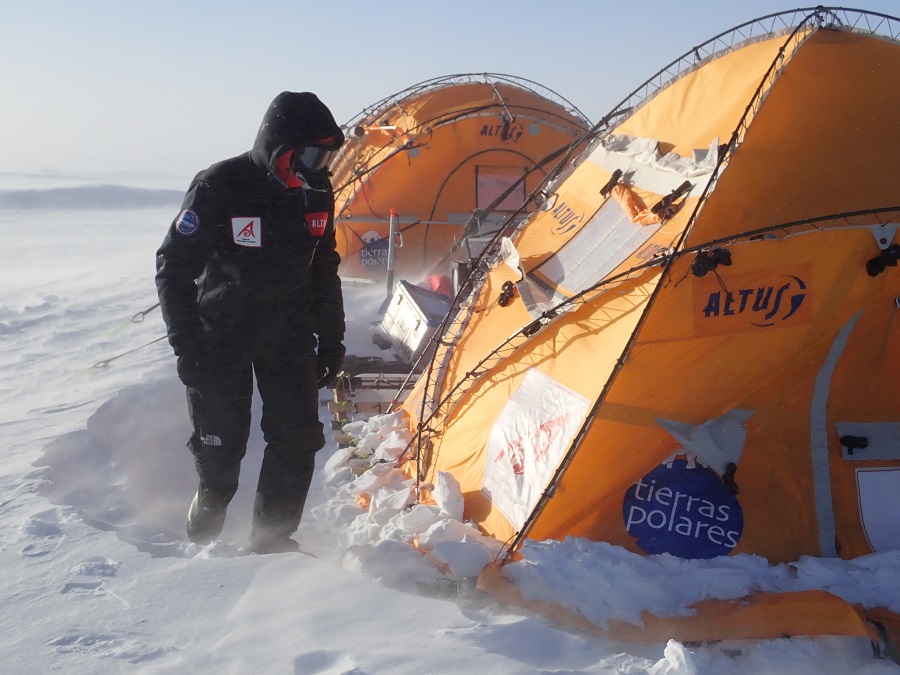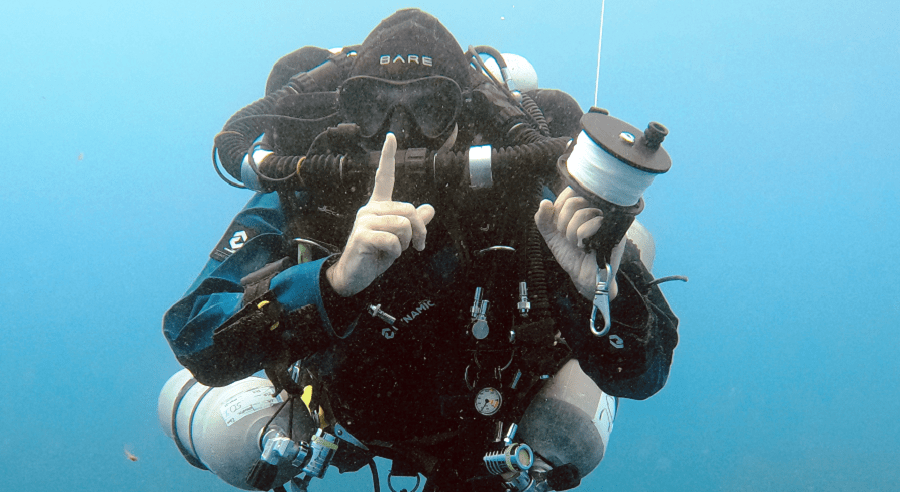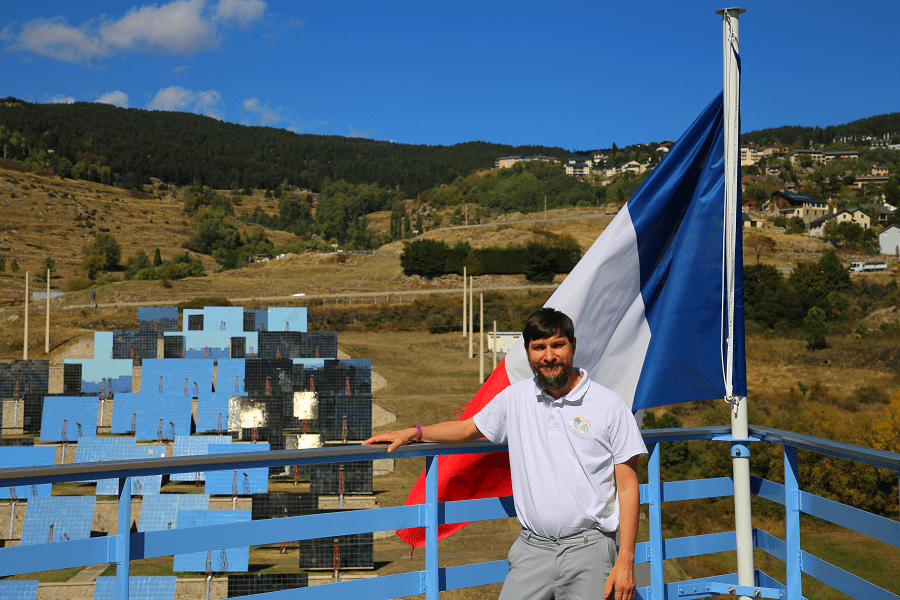A group of Spanish explorers and research assistants presented their film Antarctica Unexplored 2018-2019 at the Mountain and Travel Film festival in Andorra. The expedition team included four people: the leader of the expedition Ramón Larramendi (one of the greatest polar explorers in the world; the protagonist of the Mapfre Circumpolar Expedition, which covered 14,000 km in three years; author of the Inuit WindSled project, with which he has already traveled more than 20,000 km in the Arctic and Antarctica) and his colleagues Ignacio Oficialdegui (expert engineer in renewable energy), Hilo Moreno (guide and assistant at the Spanish Antarctic base of Juan Carlos I) and Manuel Olivera (expert industrial engineer).
It was a unique trip that has revolutionized the world of polar science by reaching the heart of Antarctica with an Aeolian vehicle, totally environmentally sustainable and economically efficient, to conduct a scientific campaign. The expedition members traveled on ice for 53 days, in total autonomy, through one of the most unknown and inhospitable areas of Antarctica.
One of the expedition members, Manuel Olivera talked to us about the main goals of the expedition and shared his experience of this incredible continent.
Of Mallorcan origin, Manuel Olivera graduated as an industrial engineer from the Polytechnic University of Madrid. Subsequently, he completed a Master’s Degree of Science in Civil Engineering from USC, California. Already at a young age, he was attracted by mountains and adventure. In 1987, he was the expedition leader with the Technical School of Industrial Engineers at UPM, in the Andes of Peru.
The following year, he traveled the Spanish Cantabrian coast by kayak with Ramón Larramendi.
Two years later he participated in Ramón’s 1990-1993 Mapfre Circumpolar Expedition. Together they traveled thousands of miles in three different periods, over 16 months in total.
In the 2014 Greenland Circumnavigation Expedition, Manuel was responsible for the communication and management of scientific projects. He also participated in the 2016 Ice Summit Greenland Expedition.
Please tell us about the last expedition – Antarctica Unexplored Dome Fuji 2018-2019?
It was the third time for the Windsled Project to visit Antarctica (earlier in 2005-2006 and 2011-2012), but on this occasion with an improved vehicle, a 100% scientific objective and a challenging exploration route given the high altitude reached solely driven by wind energy.
As usual, it was led by Ramon Larramendi, who organized 7 expeditions in Greenland and 3 expeditions in Antarctica.
Unexplored Antarctica Dome Fuji 2018/19 covered a total of 2,538 km of East Antarctica in 53 days along a triangular route that has not been previously covered by any international expedition without motorized means or external assistance.
WinSled is a zero-emission vehicle pulled by kites, connected to the sled with a 350-meter-long twin tether, and manually controlled like a normal kids kite. It consisted of three interconnected sleds. Ramón Larramendi came up with the idea for this type of vehicle in 1999, during a trip to the North Pole (where Ramon was the only civilian among a group of Spanish militaries), when he was looking for an easier way to get around on the Polar ice, without dog sleds.
This wooden construction demonstrates, after almost 24,000 kilometers already covered in polar territories, that the polar eco-vehicle is an efficient alternative, the most sustainable and cost-effective for global polar research to date, even in the most adverse conditions.
How did you get to Antarctica? When did you start your last expedition?
We flew to Cape Town by regular flight. There we still needed to buy some food and last bits and pieces for the expedition. On December 8th we took an ALCI flight from Cape Town to Novolazarevskaya; this logistics company mainly serves scientific bases. It was a big Russian plane, a former military cargo plane. Onboard we were around 15 people, including the crew, and most of the space was taken by cargo for the bases: tones of equipment, food, and even some beer!
Novolazarevskaya airport has a runway temporarily located on ice. It is often closed because of snowstorms. It services planes with 4 engines.
We started our expedition from Novolazarevskaya – this is the name of the Russian base opened in 1961 during the 6th Soviet Antarctic expedition. The station is located in the southeastern part of the Schirmacher oasis on the coast of the Queen Maud Land, about 80 km from the coast of the Lazarev Sea. Here, research is carried out on meteorology, geophysics, glaciology, oceanology, etc.
We departed towards the interior of the continent, Dome Fuji, with an altitude of 3,810 m.
During this expedition, we visited Plateau Station – an old American base abandoned 50 years ago. It was one of the main milestones of our trip – to pass through this strange place, completely covered by the snow.
It was quite a small base: four scientists and four navy personnel. It was constructed in 1965 and it was closed in January 1969. Plateau Station was the most remote and coldest of any United States stations on the continent. It was also the site for the world’s coldest average temperature, at the time, measured for a month and recorded in 1968 (−73.2 °C).
And now what is the lowest temperature record?
It is −98°C (but it was registered from satellites). Physically, the lowest fixed temperature was registered in 1983 at Vostok base: it was -89.2 °C. This is Antarctica’s winter…
What about Antarctica’s summer? How “warm” was it during your summer expedition?
As we always were at altitudes over 3000 m (this is the average depth of ice covering East Antarctica) the minimum temperature was about −42 °C. Maximum temperatures in summer in this area are not higher than −20 °C.
For what purposes was this base used?
Until the Fuji Dome Station opened in 1995, Plateau Station at 3,624 meters was the highest altitude outpost, making the base a useful location for high-altitude research. It even had an airport with aircrafts like Hercules C-130 with ski landing gear. A 32 meters high meteorological tower was erected with instruments at varying heights to monitor the persistent thermal air inversion layer above the Antarctic snow.
One primary purpose of the base was solar observations, given the high altitude, clear air, and relatively short distance to the sun during the austral summer. Among the major activities were micrometeorology studies (wind speed and direction as well as temperature); polar Illumination from both direct and diffuse sources (Plateau Station was ideal for measuring this due to the relatively clear atmospheric conditions); upper atmospheric and geomagnetic studies.
It is known that in 1966, the camp inhabitants experienced a severe snowquake, which was apparently caused by hoar frost crystals below the surface.
It is hard to imagine, but the military and scientists lived in complete isolation from the world for a whole year until another crew changed them.
What are the main researches you conducted during your expedition?
Apart from moving, we had to do a lot of work! Actually, we had many tasks assigned by different universities and scientific institutions, and many research responsibilities.
Unexplored Antarctica Dome Fuji 2018/19 brought on board ten leading research projects in biology, geology, weather prediction, telecommunications, space science and exploration, and the environment. It was a unique opportunity for scientists to collect data in a practically unexplored area that is lacking “field information”. Several projects are related to the detection of signs of life under extreme conditions, connected with the search for life on other planets, but also concerning environmental pollution, physics, climate change, etc.
Could you talk about it in more detail, please?
First of all, GESTA (Galileo Experimentation & Scientific Tests in Antarctica) project consisted of carrying two receptor devices: one of them served to study the luminescence in the ionosphere, such as the scintillation that gives life to the austral auroras. Another one allowed to test how signals are received from the constellation of the European Space Agency positioning satellites in the interior of Antarctica, done for the first time on the coldest continent.
Then, with a special drill, we obtained cylindrical samples of snow and ice measuring up to 4 meters in depth. These samples will be processed and sent to the University of Maine (USA): for the analysis of its chemical elements, particles, gases, and microbiology.
On the sled, we installed an AWS (Automatic Weather Station) to collect meteorological data, including speed and direction of the wind, during the route. It was completed by the collection of air samples and all data was sent to Universidad Autonoma of Madrid.
The objective of the scientific project of the Space Research Group at the University of Alcalá de Henares was to create a cartography of the natural radiation environment observed along our planned itinerary. For this purpose, they installed a sensor that was previously tested on the 2016 Ice Summit expedition. With the collected measurements, in addition to the study of the radiation environment, the viability of the WindSled platform for the development of systematic observations in Antarctica will be analyzed.
Then, WindSled carried the Mars Environmental Dynamics Analyzer (MEDA). These sensors are approved instruments for traveling to Mars in the MARS 2020 mission, developed by the Center for Astrobiology (CSIC-INTA) and the University of Alcalá de Henares. They include radiometers and air temperature sensors that point to the sky and the ground. MEDA studied environmental dust and the temporal response to changes and meteorological phenomena. Likewise, it recorded the environmental pressure on the surface, the air and soil temperatures, the relative humidity in the environment, the winds and the ultraviolet, visible and infrared radiation. For researchers, it was essential to test it in Antarctica to see how it performs in extreme conditions.
The SENTINEL project, by the Institute of Environmental Assessment and Water Research (IDAEA-CSIC), was focused on the detection of persistent organic pollutants (POPs) in the Antarctic ecosystem. During the expedition, samples of air and snow were taken, which will be analyzed later in search of these polluting substances.
In addition, the WindSled carried a portable device on board with the sensors that revealed bacteria and viruses. This instrument was developed in Spain to detect extraterrestrial life in planetary exploration. It is based on the antibody microarrays for the detection and identification of biochemical compounds through the ‘in situ’ analysis of soil and liquid samples. This campaign is about sampling the ice, looking for parallelisms with future discoveries on other planets by Centro de Astrobiologia at INTA.
Have there been any studies related to changes in air temperature?
Yes, it was a task of Universidad Alcalá de Henares. In recent decades, an increase in the average annual air temperature has been described, based on the analysis of data provided by satellites and static atmospheric monitoring stations AWS distributed throughout the continent. However, data from a dynamic transect has never been obtained nor studied before. Thus, our objective was to analyze the evolution of air temperature along this Antarctica transect. The data will be interpolated and calibrated with that acquired from the static meteorological stations AWS.
Can you tell us about the Deliquescence experiment in the Antarctic ice sheet?
This experiment will determine if transient liquid water can be formed in the salt (common NaCl table salt) from deliquescence under extremely cold and dry conditions of the Antarctic ice sheet. These conditions are analogous to those of Mars. It has been shown that salt rocks (NaCl) promote the activity of liquid water in extreme dry temperate environments, such as the Atacama’s hyper arctic desert. This is due to the phenomenon called deliquescence. It is about testing the hypothesis that salt deliquescence can also occur under extremely cold conditions of the ice sheet. We used RH/T and electrical conductivity (EC) sensors embedded in a substrate of salt which will collect data every 15 minutes. The experiment will help understand the process and conditions under which liquid water can still occur in extremely cold and dry environments, including the surface of Mars.
Solar panels were installed on the sleigh. For what purpose?
Solar panels were originally installed to obtain the energy required to run our regular devices as well as the science equipment onboard. Later came the HELIOS Project (UNIVERSIDAD DE VALENCIA), whose aim is to identify the communities of organisms that colonize environments that have some particularity. At present, HELIOS studies the organisms that colonize solar panels. Photovoltaic surfaces combine several stressors such as temperature, radiation, desiccation and low concentration of nutrients. The WindSled expedition “Unexplored Antarctica Dome Fuji 2018-19” offered a great opportunity to study the extremophile microbial communities present in remote areas of Antarctica. The solar panels on the sled acted as an “extremophiles trap” along the route.
How many research stations are currently operating in Antarctica?
About 80, most of them are opened only in the summer. For example, the two Spanish bases are opened only in the summertime.
What are your personal impressions about Antarctica?
Well, it was my first Antarctic expedition and it has nothing to do with the warmer cold weather of Greenland, where I went before. It is as if I have been to the Moon, really. It is completely flat.
Antarctica is a huge continent, 28 times bigger than Spain.
How did you prepare yourself for the trip? And has it changed your life somehow?
I didn’t do anything special. All of us were very concentrated. Ramon invited us to participate in the expedition 10 months in advance, so we had enough time to prepare. Moreover, we knew each other from previous expeditions, a very important fact.
The first time I went to the Arctic was in 1990, it was a 1-year trip to Greenland and Canada. After coming back I was completely disconnected. I was lost and it took time to come back to reality.
But now, after my last expedition, everything was ok.
Who sponsored the expedition?
One of our sponsors was the Foundation of Prince Albert II of Monaco. The Foundation was initially created in 2006 by Prince Albert II of Monaco and it concentrates on environmental protection, sustainable development, climate change and the promotion of renewable energies as well as biodiversity.
Other collaborators were the European Space Agency (ESA) and the Higher Council for Scientific Research (CSIC).
The main sponsor of the expedition was the adventure travel agency owned by Ramon.
The total budget was about 300.000 euros.
Will there be another expedition?
Probably this year, in Antarctica summertime. This expedition is going to be the longest one yet – about 100 days of sailing and more than 5000 km. However, this time I cannot participate in it.
Interview: Irina Rybalchenko






